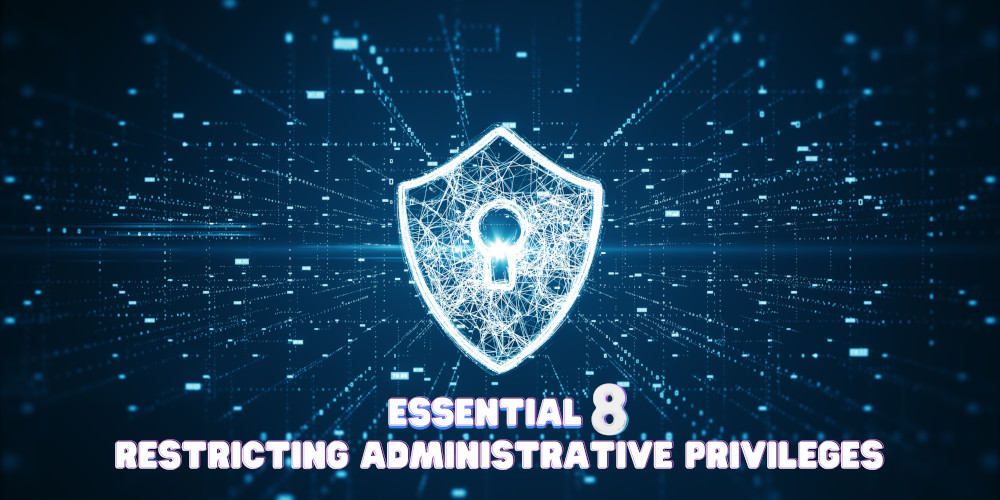Welcome back to our series on the Essential 8, a collection of strategies recommended by the Australian Cyber Security Centre (ACSC) designed to fortify small businesses against cyber threats. These practical measures are crucial in today’s digital age, offering a shield against the ever-evolving landscape of cyber risks. Today, we dive into the fifth component of the Essential 8: Restricting Administrative Privileges. Understanding and implementing this strategy is key to safeguarding your business’s digital assets and information. Let’s explore what restricting administrative privileges entails, why it’s critical for your business’s security, and how to effectively apply it in your operations.
What It Means to Restrict Administrative Privileges
Imagine administrative privileges as a master key to your business’s digital kingdom. This key unlocks the ability to make significant changes to systems and networks, bypass security protocols, and access confidential information. Just as you wouldn’t hand out keys to your physical premises to everyone, it’s crucial to be judicious about who is granted these digital privileges. Restricting administrative privileges means limiting the number of people who have this master key, ensuring only those who absolutely need it for their job functions can access it.
Why Restricting These Privileges Matters
Hackers are constantly on the lookout for vulnerabilities they can exploit. Accessing a system with administrative privileges is akin to finding a treasure trove; it enables them to cause more damage, spread malware, steal sensitive data, and make their presence on your network persistent. By limiting these privileges, you’re effectively adding an extra layer of security, making it more difficult for attackers to take control of your systems.
Furthermore, a system with fewer administrators is easier to manage and less prone to unintentional misconfigurations or changes. This stability is vital for smooth day-to-day operations and maintaining the integrity of your business’s data.
Common Mistakes to Avoid
It’s not enough to simply reduce the number of privileged accounts or share them among team members. These approaches can create security gaps, making it easier for attackers to exploit your systems. Other ineffective practices include temporarily granting administrative privileges or placing standard user accounts into groups with administrative access. These strategies might seem to offer convenience but compromise security.
How to Effectively Restrict Administrative Privileges
- Identify Necessary Administrative Tasks: Determine which specific tasks require administrative rights.
- Validate Staff Requirements: Ensure that only employees who need these rights to perform their job duties have access.
- Create Attributable Administrative Accounts: Provide designated accounts for users who need administrative access, ensuring these accounts have the minimal level of access necessary.
- Regularly Revalidate Access: Periodically review who has administrative access, especially after role changes, departures, or security incidents.
Keeping Privileged Accounts Safe
To minimise risks associated with privileged accounts, ensure they:
- Avoid unnecessary internet access, except when required for specific tasks like managing cloud services.
- Adhere to secure management practices, reinforcing your defence against potential cyber threats.
Restricting administrative privileges is not just about locking down access; it’s about creating a more secure, manageable, and stable digital environment for your business. By carefully controlling who has these rights and how they are used, you protect your business from internal and external threats, ensuring operational continuity and security. Stay tuned for more insights as we continue to explore the Essential 8 and how each component fortifies your cybersecurity posture.
Secure management practices are vital for your business security and stability. Don’t hesitate to reach out to KeyTech for expert advice and assistance on the Essential 8 and how to apply them in your environment. Stay secure, stay protected!

